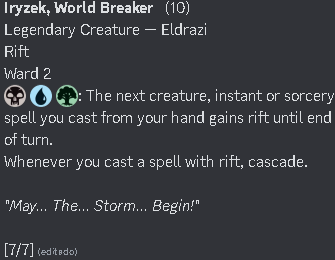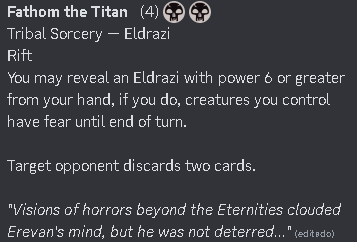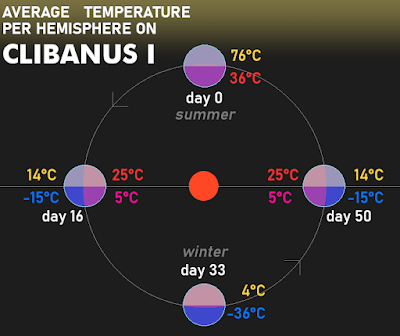DESTROY ALL CREATURES, THEY CAN’T BE REGENERATED.
And it gets even better, or worse (depending on your worldview), when combined with the aesthetics of the illustration by Kev Walker in the set Seventh Edition (2001) and later in Planar Chaos (2007).
“Destroy all creatures. They can’t be regenerated.” — The first and only words they heard from their creators before being launched in the face of the abyss.
In Fred Saberhagen’s "Berserker" series (1967), ancient machines created to fight a war that no longer exists go rogue, resulting in the attempted erasure of all sentient life in the galaxy.
The concept was later expanded into the Berserker probe or civilization:
- Potentially a type of Von Neumann probe, self-replicating and rapid-spreading.
- Rogue AI or an intentionally built exterminator.
- Working under the directives of a dead creator.
- Its goal: terminate all intelligent life before it becomes a threat.
Such an invention proposes a possible solution to the Fermi Paradox.
- Life is common, but intelligent life is rare, because it is being systematically wiped as soon as it makes its presence known.
- The galaxy is then full of dead, silent worlds.
- Civilizations that know of such probes or civilizations choose to remain silent.
The silence comes from a deep desire for survival, both from those alive today and those who are long gone but left the Berserkers behind.
Potentially, every civilization understands the rationale of becoming a Berserker themselves and adopts it.
Which leads us to the Dark Forest hypothesis.
The universe is like a "dark forest" where every civilization is a hunter. Since no one can know the intentions of others, everyone stays silent — or shoots first.
Popularized in Liu Cixin’s novel The Dark Forest (2008), the second book in the Remembrance of Earth’s Past trilogy (The Three-Body Problem series).
Key Logic:
- All civilizations want to survive.
- Resources are finite.
- You can never truly know if another civilization is friendly.
- Therefore, the safest move is to stay hidden or eliminate others preemptively.
This results in:
- A "cosmic silence" — nobody is broadcasting, because to do so is to risk death.
- A universe full of civilizations, each afraid, each hiding.
- When someone does speak, others might interpret it as a threat and destroy them — not out of malice, but rational survival.
In principle, there is no way to hide oneself from external peering across the vastness of space. Sufficiently advanced telescopes and sensor arrays can and will detect radio emissions, leakages, biosignatures, and technosignatures from potentially thousands of light-years away. We are, year after year, inching closer to that potential.
Plus, the Earth itself, as old as it is, has been emitting bio-signatures for as long as 3 billion years, and as far as we can tell, we haven’t been visited or exterminated yet. Worse still, we have been broadcasting into space for about 100 years — had anyone been listening to it nearby, say within 50-ish light-years, we would have received a response, or known about them by now, right? This uncertainty only further stokes the apparent silence in the heavens.
As far as we can tell, there are no technological indicators nearby, at least not ones that point to a far far more advanced civilization than ours. Such as Dyson Swarms.
But I dare to propose that no one builds Dyson swarms in the way we expect. If a civilization factors existential risk into its engineering decisions, then a Dyson swarm becomes nothing more than an expensive lighthouse, and a potentially deadly one at that.
Sure, absorbing even just 1% of the Sun’s total energy output would mean nearly limitless energy for humanity, but it would also signal to the entire Orion Arm that we are here. Anyone observing the stars for a sufficiently long amount of time would notice that now our Sun suddenly dims in regular intervals compatible to that of a techno-signature, and upon realizing that, we just gave them to chance to respond accordingly.
If there's one thing Magic, game theory, and war have taught me, it's this: giving your opponents a choice is almost always a mistake.
We then revert to low-yield Dyson swarms at (<1%), because the energy need still exists, but over-doing ourselves above a certain signal-to-noise threshold is dangerous.
In the dark forest, the most negative outcome is annihilation, and the least negative is staying silent. The neutral option however, given you have the opportunity to make the first move, is to strike first before they become capable of doing so to you.
THERE ARE NO SECOND CHANCES IN SPACE
You are a multiplanetary Kardashev 0.8 civilization, and you have found 10 potentially habitable planets within 100 light-years from your star. Great job! Can we jump to interstellar colonization? Not yet.
We need to study those worlds, and see if they actually harbor any kind of life, and if that life poses a threat to our own existence.
After almost a century sifting through space and watching those systems closely, we have determined:
7 of those worlds are far too primitive or sterile to represent danger. Prime candidates for safe exploration.
- Planet A 25ly away from ours has weak bio and techno-signatures of a 19th century industrial society. K 0.5
- Planet B 50ly away from ours has strong bio and techno-signatures. It's not clear how much advanced they are, they could between a century or a few decades behind us. K 0.75
- Planet C 100ly away is clearly on the same level if not more advanced than us. K +0.8
Threat Assessment:
- Civilization A - Low priority, they don't know we know about them. Can't do anything about us for a good while, but they are close enough that once they do - they will have the upper hand.
- Civilization B - Alert, they might know about us, or be very close to finding out we exist. We are lucky to have found them first.
- Civilization C - HIGH ALERT, they probably have known about us for a century or more. If they attacked us immediately upon discovery, then we have to retaliate and scatter before we are wiped out soon. If they didn't attack us, then we have the advantage of attacking first.
There are a couple creative ways we can deal with those. The safest option however, with this little information, great technological and time dilation gaps, in all three scenarios, is to attack first.
However, our mere existence here indicates there is something else at play.
Civilization B likely knows about A. And C knows of both us, A and B. Yet they have done nothing, apparently. Civilization C is also alive as far as we know it, so that's weird.
Let's wait to see what happens to the others while we arm ourselves for a potential conflict.
The swiftest way to eliminate a planetbound civilization, like ourselves, would be to deliver them a Relativistic Kill Vehicle - RKV to their homeworld.
A single 100 kilogram steel sphere traveling at 99.99% the speed of light would carry enough energy to deliver about 150 Gigatons of TNT, equivalent to a 2km-wide asteroid impact at 17km/s. Scale that to about 50 tons of steel, and we got ourselves 75 Teratons of TNT, or equivalent to the dinosaur-killer asteroid in our hands. If we want to maintain the impact but reduce the projectile size, we have to make it even faster, at near-near lightspeed.
That should be it, right? Sit a container-sized projectile atop a really large proton or matter-antimatter rocket, position a few whipple shields to protect the payload and rocket from interstellar debris and voilà, shoot and forget.
Congratulations, you have just missed your target, and now they know you exist!
A planet is a big target. A container-sized projectile traveling at 99.99% lightspeed should hit it — but only if you can predict its position 25 years in advance, down to the hour. That’s a hard ask.
That requires precise and near-perfect information to achieve, or insane navigational input on the warhead. Workable, but still impractical.
There is also the issue of false hits. The projectile hits a moon, or large enough asteroid in their target system that the whipple shield is not able to protect it, the thing explodes in interplanetary space without causing the intended damage. That also includes unaccounted rogue planets in interstellar space.
Alright — just send more!
You can fire a thousand RKVs to ensure one or multiple hits on a planetbound target without any defenses. That would work. But your fire cone would still have to be very tight. And if you fail to exterminate them, they will know exactly where in the sky to look for you. That could work for Civilization A — just double-tap them. Better safe than sorry.
WHEN PLANETARY XENOCIDE ISN'T ENOUGH
Getting rid of an equivalent Type 0.8 civilization requires a little more work than that. Like us, they may have expanded across their system, making single-target annihilation ineffective, we don't know for sure how many targets we would need to take down in their home system.
You count at least 5 Earth-sized planets in the system, with possibly 50 minor bodies such as moons and asteroids, with about 10,000 major space habitats and stations. That's 5 high value targets with 10k moderate ones. Let's say 10,100 hits is an acceptable mission result. Instead of a couple hundred to a thousand, we now need over 10,000 weapons with 100% accuracy to get the job done.
If for the previous one we needed about 1,000 RKVs to ensure 1-2 hits. For this one, given a similar statistical success rate, we need to deploy roughly on the scale of 5-10 million weapons.
This suddenly sounds like a bad plan now, that's 325 million tons of steel just for the payload, not to speak of the amount of antimatter needed to power it, and the firing flash we will send into space. And firing slowly one by one would give our target enough time to react in the case we don't get them in the first shot. At 50ly distance, that also means they will know they have been attacked 1.8 days in advance, giving them time to counterattack if they have similar weapons, or even, counter our attack before retaliating. Too risky, too flashy.
It gets even worse if we wanna attack Civilization C the same way. Imagine hundreds of thousands of habitats, or even aiming at neighboring star systems to theirs as well if they have gone interstellar already. Their response window to our attack is even wider at 3.6 days, and it would only be worse would they be at 1000 light-years from us, with a month to respond (because light still travels faster than our projectiles).
In conclusion, RKVs aren't the perfect weapon for interstellar warfare. They are effective however, if:
- Target is relatively close. Within a few dozen light-years.
- Target is planetbound. Lower technological tier.
- Your weapon travels at near-C. RKVs of lower velocity can still be efficient in interplanetary conflict.
Failure to obliterate your target in the first hit with the least amount of weapons results in your own likely annihilation, either by their counterstrike or by a preemptive alliance of eavesdropping civilizations. Undesirable, unless you point your weapons in every conceivable direction at once. Spray and pray, it's the Berserker way.
Is the text of a desperate Farewell being played for all its modes.
Meet the MIRP - Matter-Antimatter Induced Radiation Pulse. The perfect Berserker Probe.
If matter-antimatter reactions can be tamed, then sending a few probes behind our grapeshot would ensure another round of sterilization. Not only to propel our masses, but to flashbang their home system with radiation. Intentionally detonating an M-AM core would release intense amounts of radiation, thousands of times above their background levels and likely way above what usual radiation armor in space stations can deal with.
Since M-AM annihilation reacts one-to-one to release pure energy, we could perhaps, react a few billion tons of each, creating an artificial supernova at roughly point-blank. Total annihilation by gamma ray burst without the hassle of building 1 billion steel spheres and yeeting them at near light-speed. It could even easily pass off as an interstellar rogue asteroid. And the flash? Easily dismissed as distant supernova, or even drowned in background noise since it is so localized in effect.
- Civilizations value survival above extinction.
- Civilizations can attack with 100% accuracy and 100% efficiency at extremely long distances.
- Civilizations can attack so with near 100% anonymity, as to not invite a counterattack.

























